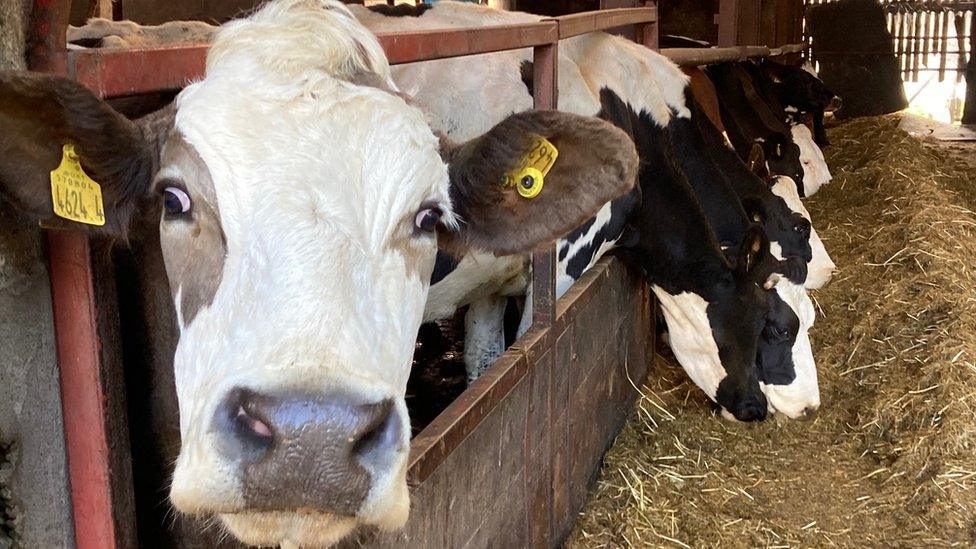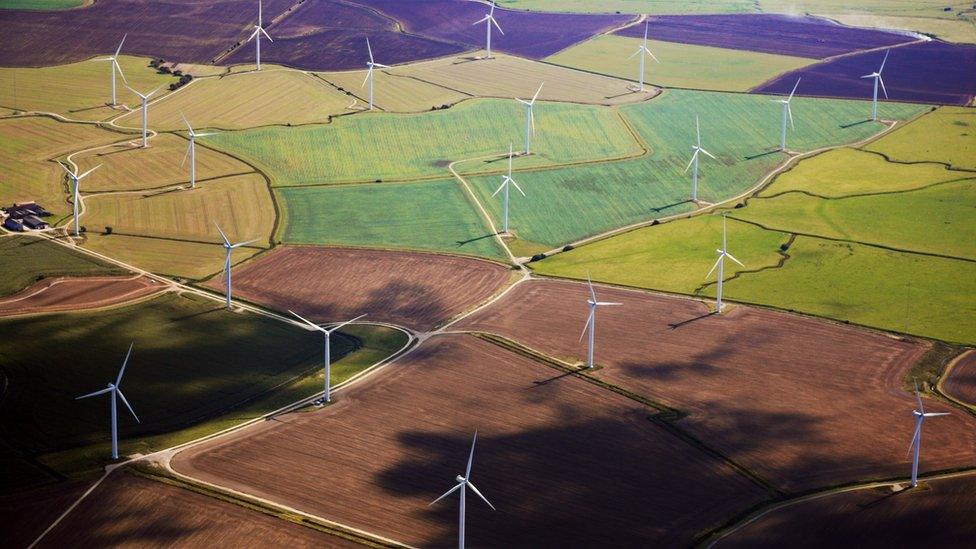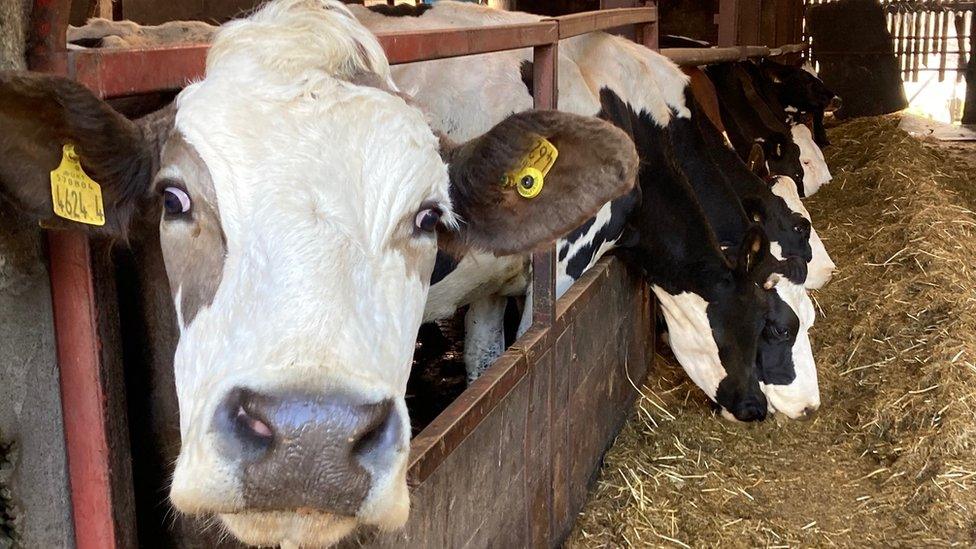Agriculture NI's biggest greenhouse gas emitting sector
- Published

Greenhouse gas emissions have decreased in NI, but agriculture remains the highest emitting sector
Agriculture remains Northern Ireland's highest-emitting sector, new figures from the Department of Agriculture, Environment and Rural Affairs show.
The latest Greenhouse Gas Inventory, external details emissions in 2020.
It says agriculture is the only sector to have shown an increase since the base year of 1990, with all other sectors reducing their emissions.
Overall, Northern Ireland's greenhouse gas emissions have decreased by 24% between 1990 and 2020.
Greenhouse gases in the atmosphere, which include carbon dioxide and methane, trap heat from escaping into space.
The emissions estimates in this report cover seven greenhouse gases: carbon dioxide, methane, nitrous oxide, hydrofluorocarbons, perfluorocarbons, sulphur hexafluoride and nitrogen trifluoride.
Agriculture was responsible for 28% of local emissions in 2020.
Compared to the base year of 1990, that is a rise of 7%.

The report said the downward trend was mainly driven by the energy supply sector
The other largest sectors - transport, residential, energy supply, business, and land use, land use change and forestry - have shown a decrease in that time.
Based on the projections released on Thursday, agriculture is expected to see a decrease of just 1% between 2020 and 2031.
But its share of emissions is projected to rise to 32% by 2031, as "other sectors reduce emissions at a faster rate".
The inventory estimated 2020 emissions to be 21m tonnes of carbon dioxide equivalent (MtCO2e).
This was a 24% decrease on the 28 MtCO2e emitted in the 1990 base year.
Renewable generation
Over the coming years, emissions are expected to decrease year-on-year, with an overall estimated reduction of 13% by 2031.
The report said the downward trend was mainly driven by the energy supply sector, as electricity generation moves away from using fossil fuels and switches to using more gas and renewable generation.
It added that the business sector will contribute almost a third of (31%) the overall reduction in emissions from 2020 to 2031.
From the base year to 2020, transport emissions decreased by 2%.
They are projected to decrease by 8% from 2020 to 2031, largely driven by the expected increase in electric vehicles and changes in carbon dioxide regulations for vehicles.
The sector contributed 16% of emissions in 2020, and is predicted to have a similar share (17%) in 2031.
The residential sector's emissions have fallen by 23% between 1990 and 2020, with a decrease of 24% expected between 2020 and 2031.
And energy supply emissions have decreased by almost half (46%), with a slower rate of reduction anticipated from 2020 to 2031.
Related topics
- Published2 November 2021
